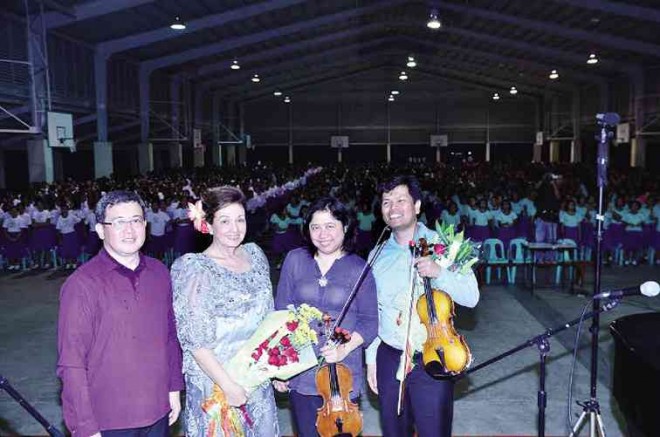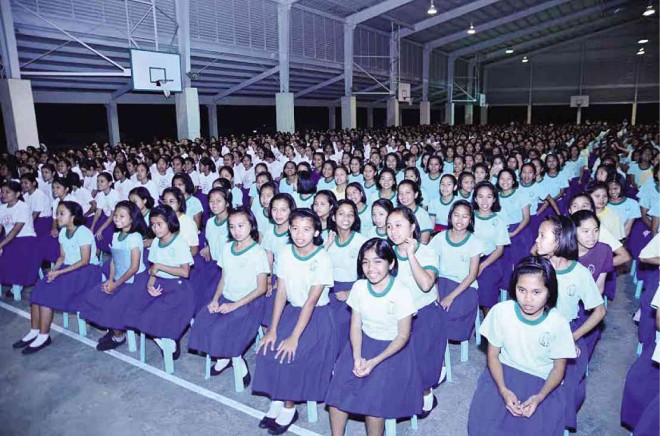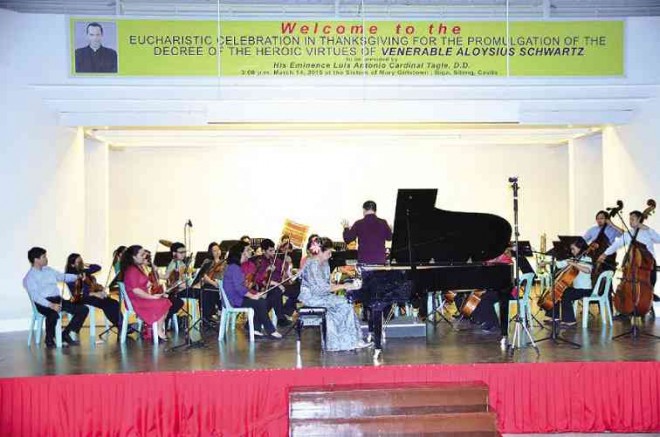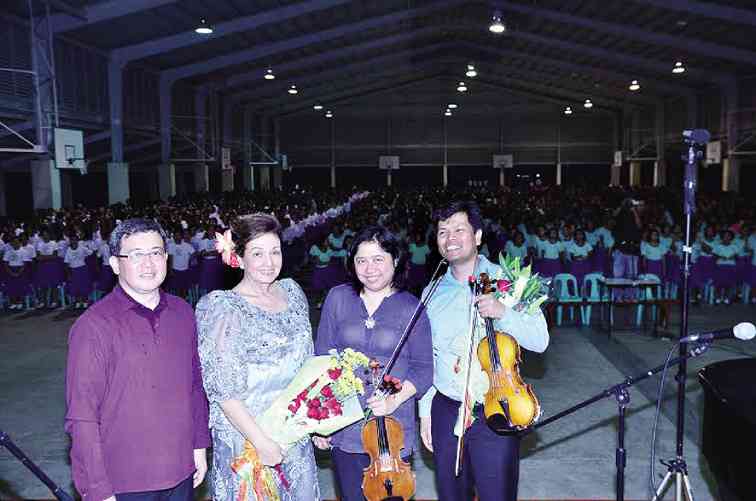
The recent outreach concert of the Manila Symphony Orchestra (MSO) under Arturo Molina at the Sisters of Mary School in Silang, Cavite, was an eye-opener for those who believed that classical music would be lost on the young.
Silang is an hour and a half away by bus ride from Metro Manila. Venue was an open-air gymnasium that was not exactly a dream venue for a classical concert.
But with a highly appreciative and well-behaved crowd of 3,000, the MSO got its dream audience.
The MSO engagement was also the first encounter with an orchestra for an all-girls school in Cavite. To help the audience, MSO executive director Jeffrey Solares introduced the different instruments in the orchestra.
Theron Kirk’s primer for narrator and orchestra was most useful as it allowed students to know where orchestral sounds were coming from and how each section related to others.
Starting with Rossini’s Overture to Barber of Seville, MSO made a rousing start as the student audience paid attention to the sounds coming from different instruments.

Despite very little amplification, the sound in the gymnasium was close to ideal.
Under this condition, Molina led the orchestra in a most taut and moving rendition of the Adagio and Finale from Dvorak’s New World Symphony.
It is probably the students’ first encounter with a piano concerto and Mendelssohn’s G Minor Concerto, with pianist Ingrid Sala Santamaria as soloist, was, indeed, a fitting offering.
After all, the concerto was composed by the then teenage Mendelssohn living out his prodigy years. This probably explains the concerto’s zest and lightness.
The concerto’s winning melodies were probably pure magic in the ears of the students and Santamaria and the MSO under Molina gave it a tantalizing reading without overlooking the concerto’s youthful appeal.
Santamaria lived up to the concerto’s glittering passages. She even managed to give a special sparkle to the first and last movements.

No doubt about it, the concerto’s second movement is its main appeal with an indescribable melancholy haunting the slow movement. Santamaria knew when to accentuate a certain phrase and give it a lightness so typical of the flavor of this concerto.
Winning moment
The last movement was no doubt the winning moment for both soloist and orchestra. There were much power and precision from the orchestra and much youthful touch from the soloist.
The result was a rousing standing ovation from the student audience.
The orchestra’s rendition of the New World Symphony was, indeed, highly reflective of the vision of the founder of the school, Fr. Aloysius Schwartz, who has been declared under a Vatican order a “Venerable” on the path to canonization.
The students of the school that Father Schwartz founded come from the poorest of the poor and are given scholarships with free board and lodging.
Venerable Aloysius Schwartz is buried at the Children’s Village for Girls in Silang, Cavite.










































